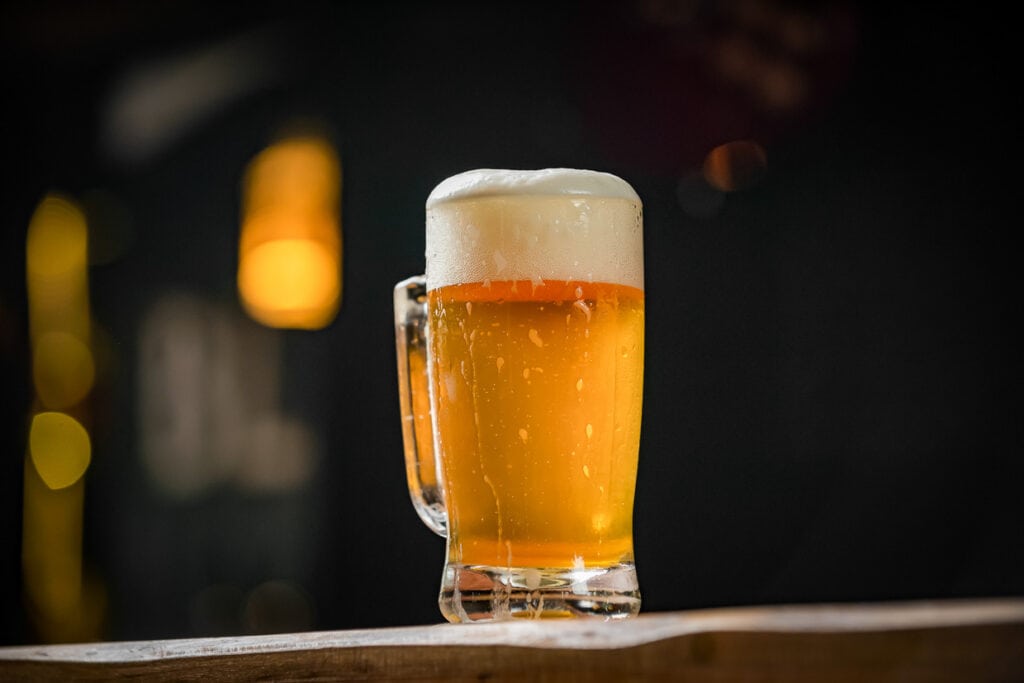Home brewing is one of those hobbies that begins with curiosity and quickly becomes an obsession — the fun kind, of course.

A home brew master’s enthusiasm can be slowed by overwhelming jargon and brewing technicality or a lack of budget for the right equipment. Sadly, this article won’t help with your budget. But it will demystify some of the terms and early steps required to get started. Keep reading, and in a few minutes, you’ll feel smarter and more prepared to start brewing your own beer at home.
“Brewing is a process that requires time and cannot be rushed. From the initial boil to the fermentation and bottling, each step takes time and rushing any part of it can lead to disappointing results. It’s important to remember that good things come to those who wait, and this is especially true in brewing.”
— Gabrielle Marie Yap, Carnivore Style
Start with a SMaSH beer
Since you’re early in your home brewing career, begin with a SMaSH beer. SMaSH stands for single malt and single hop. It is a beer brewed from one malt and one hop varietal. Making this simple beer style should help you better understand fundamental brewing principles and the nuances of different ingredients.
Here are the basic steps:
- Choose ingredients. Select one type of malt and one variety of hop. Less is more at this stage. Even if you’re attempting something interesting like a Guinness dupe or gluten-free beer, a simple formula allows you to appreciate what each ingredient brings to your brew.
- Brew with purpose. You may want to showcase your hop or your malt. Or maybe you want to produce a lower-cost brew. Whatever your goal is, jot it down and take notes on your process and the results.
- Experiment. You may not get it right the first time. That’s normal. Keep tweaking things until you achieve the goal. Have fun with this process. Fortunately, extra beer on hand is also a fun ingredient for braising and recipes like beer mac and cheese.
Don’t underestimate the value of patient exploration in creating stellar SMaSH and more complex beers. You’ll teach yourself the science and art of brewing along the way.
Get the right equipment
Ask a search engine what equipment you need to brew beer, and the results will immediately be overwhelming. Fortunately, you really don’t need a crazy long list of stuff just yet. Focus on the basics for now. The right equipment for your first setup includes:
- Brewing kettle: This is a must-have for beginners. Opt for one made from stainless steel, as it will be corrosion-resistant and easy to clean.
- Fermenter: Basic plastic buckets or carboys are fine at this stage. Choose something sturdy and airtight.
- Airlock and bung: The airlock lets carbon dioxide escape from your fermenter but prevents air from getting in. This keeps the fermenter from exploding and also prevents contamination from bacteria or dust. A bung is a stopper that holds your airlock in place.
- Thermometer and hydrometer: These tools monitor temperature and sugar levels, which are both critical aspects of quality brewing.
Finally, resist the urge to splurge on the most expensive equipment. The most important ingredient in homebrewing is not the hardware. It’s your passion for the process.
“If you’re brewing on a budget, you don’t need a lot of expensive equipment to get started. The absolute minimum you’d need is a large pot for boiling your ingredients, a fermenter for the fermentation process, an airlock to allow gasses to escape during fermentation, a thermometer to monitor the temperature and a hydrometer to measure the specific gravity of your brew.”
— Gabrielle Marie Yap, Carnivore Style
Master the sanitization process
Your sanitization process can make or break your beer quality. Follow these steps to get it right:
- Use chemicals. Invest in food-grade sanitizers like StarSan. They’re safe to use and effective at killing unwanted bacteria.
- Clean all tools. Anything that comes into contact with your brew after boiling must be sanitized. That includes transfer tubes, fermenters, airlocks and bungs.
- Remember your hands. Wash your hands with warm, soapy water.
It may feel tedious to keep every spoon, tube and jug sterile, but it’s necessary. Lax sanitation processes can invite unwanted microbes to ruin a batch that would have otherwise been delicious.
Know your ABV calcs
You want to know the alcohol content of your beer for two reasons. One, alcohol by volume, or the ABV, quantifies the beer’s strength and character. And two, it’s a fun talking point when you introduce your creation to friends and family.
Here’s how to calculate ABV:
- Use a hydrometer. A hydrometer measures the relative density or ‘gravity’ of liquids. You’ll measure the beer’s original gravity before you ferment and then the final gravity after fermentation.
- Do the math: Subtract the final reading from the original one. That gives you the apparent attenuation. Multiply that number by 131.25 to get to the ABV.
Note that typical home brews have ABVs between 4% and 6%. Higher ABVs are associated with longer fermenting times, which allow for richer, more complex flavors to develop. Enough said there — I’m guessing you’re already familiar with what beer tastes like and how that relates to ABV.
Keep learning and experimenting
While nothing replaces hands-on experimentation with ingredients and your home brewing process, there is always more to learn from others. Try joining online forums — there are lots of them — and recruit friends and family to help out. They’ll probably love to be tasters, if nothing else.
Catherine Brock is the blogger behind Blog Chef. She lives in Santa Fe, New Mexico with her husband and spends her free time riding horses and finding new ways to cook with green chiles.
This article originally appeared on Blog Chef.